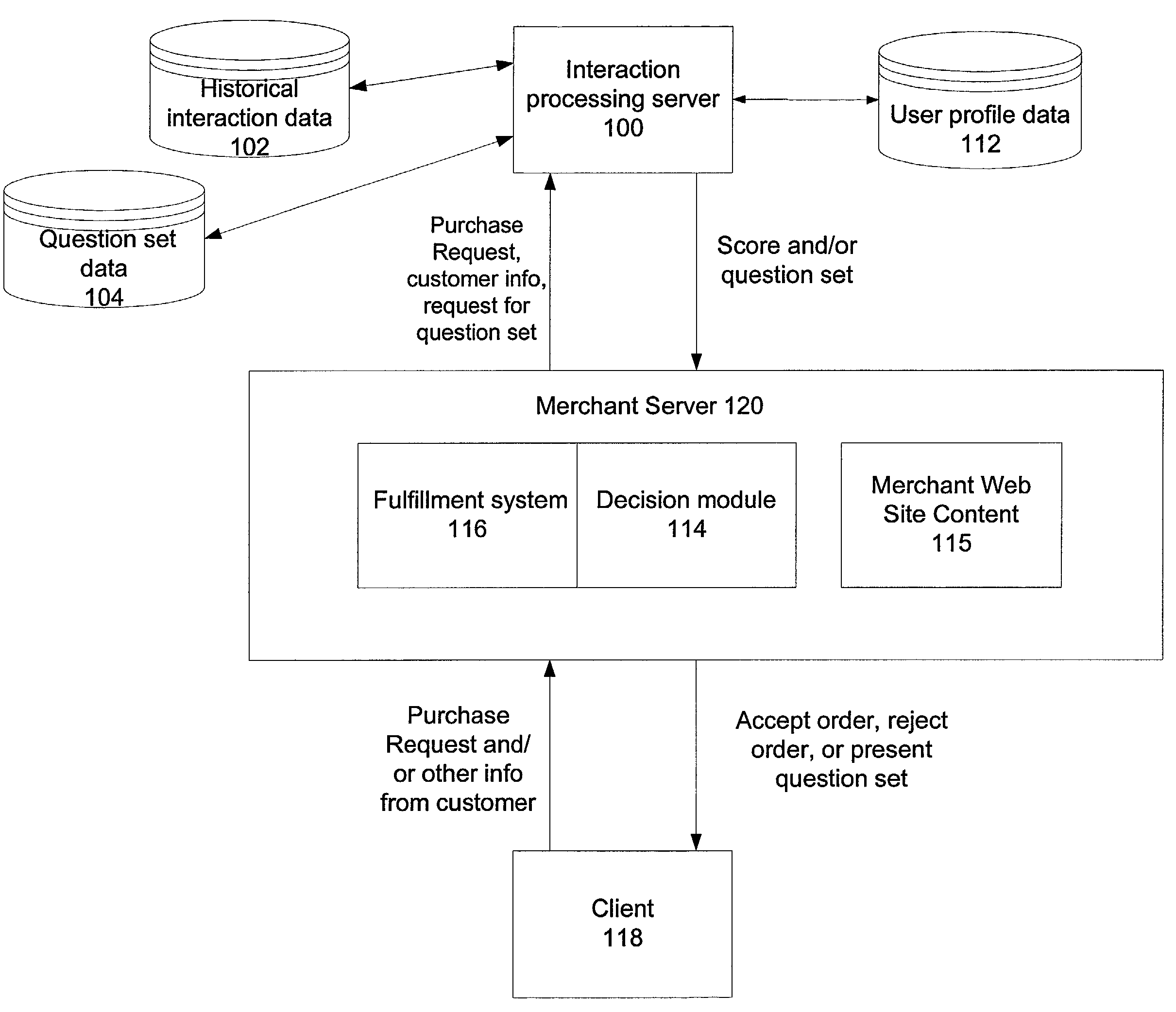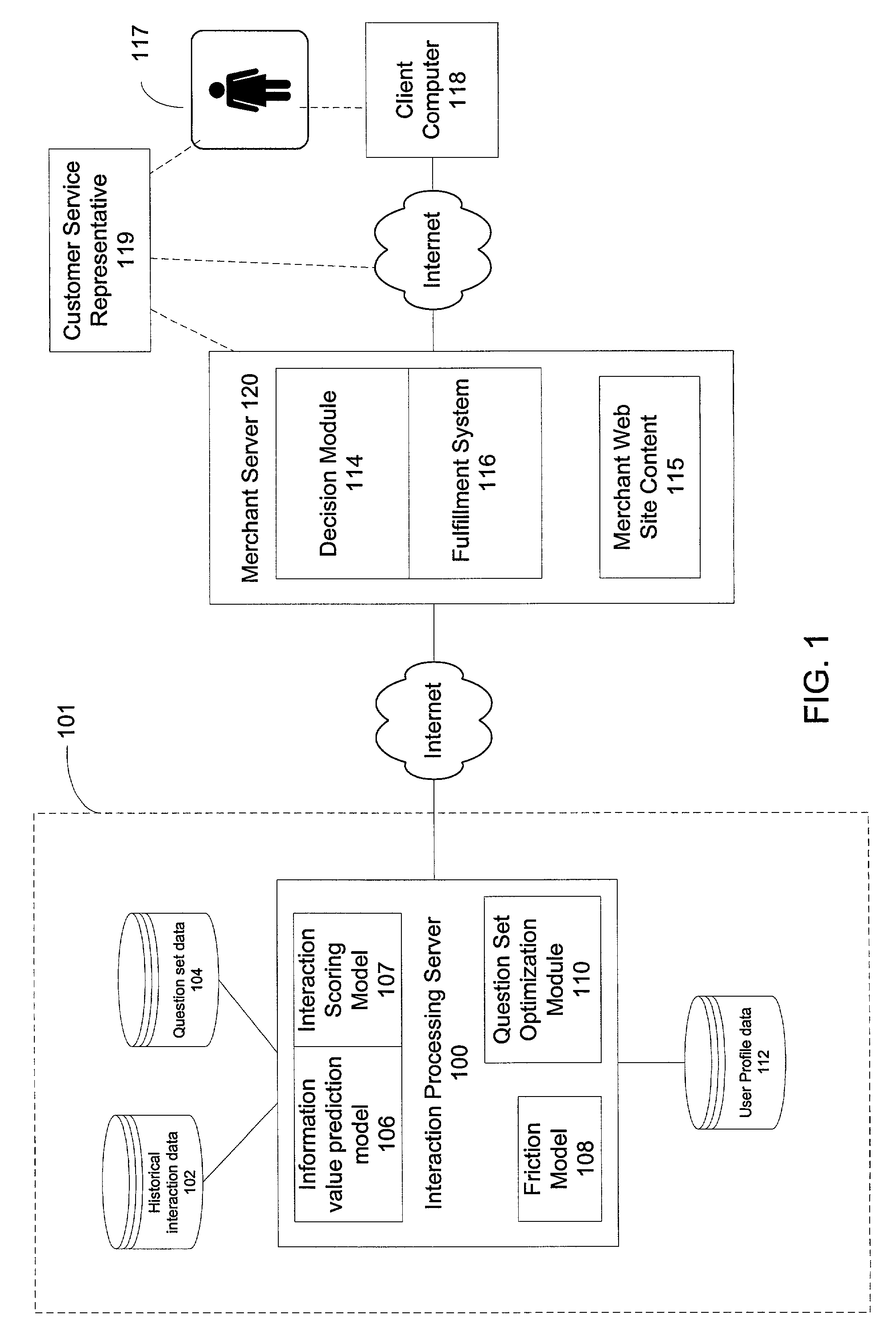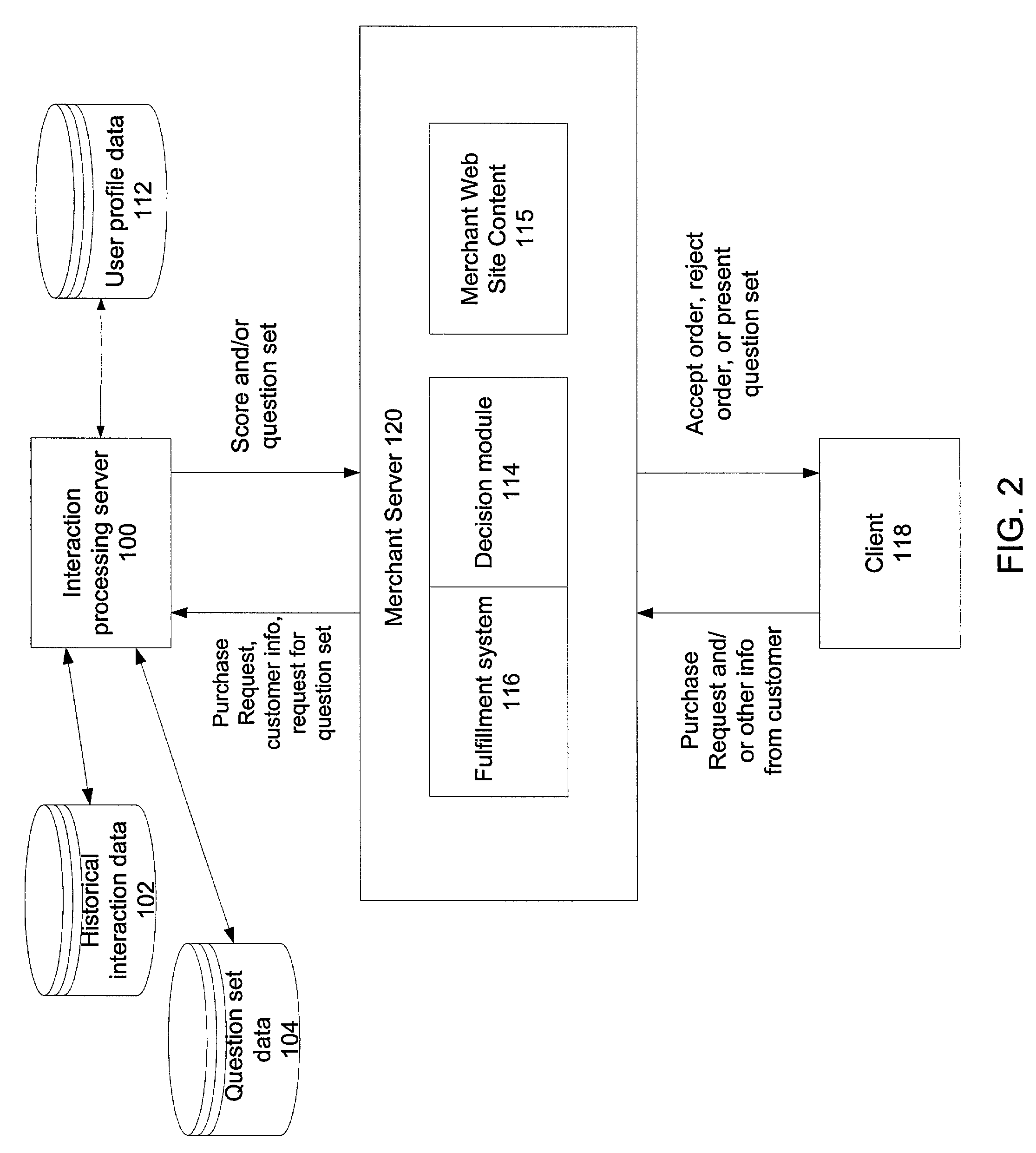Companies that conduct business on
the Internet face challenges in obtaining enough reliable information about a user to meet the needs of the company without causing the user to have an adverse reaction, e.g., to terminate the interaction.
However, in doing so, the on-line merchant can cause the potential customer to terminate the transaction, for example, by asking for too much information, or for too personal information.
Stolen cards are used in approximately 1.2% of all
Internet sales, causing on-line merchants to claim losses due to
credit card fraud of more than $200 million in 1999.
Currently, about 0.06% to 0.09% of traditional sales are fraudulent, making on-line transactions more than 10 times as likely to involve fraud as traditional retail transactions.
At least three factors make on-line sales more susceptible to fraud than sales made at retail shopping venues.
As a consequence, on-line merchants presently suffer a variety of fraud-related costs.
1) Loss of Payments & Merchandise
On-line fraud results in large revenue losses for Internet merchants.
When an Internet merchant is a victim of fraud, it loses both the
payment and the merchandise.
With Internet commerce, however, the merchant, not the issuer, absorbs the fraudulent purchases.
Indeed, for companies that do all of their business over
the Internet based on CNP transactions, this loss
exposure can be in the tens of millions of dollars.
Beyond use of a stolen credit card or of a fabricated card number, other types of fraud frequently occur in the context of on-line
purchasing.
In addition to chargebacks, merchants are responsible for loss from disputed charges when customers claim non-
receipt of goods, non-arrival of goods due to incorrect shipping addresses, or goods refused on delivery.
2) Loss from Shipping Charges
When on-line fraud occurs, however, the on-line merchant must cover the cost of shipping.
However, using parameter-based rules and negative files often leads to time-consuming fraud investigations.
The fraud investigations, in turn, lead to rising administrative costs as a result of the need to increase staff to perform the investigations.
4) Loss of Valued Customers
Poorly managed fraud-control systems can lead to decreased customer satisfaction resulting in lost revenues to retailers.
However, these lengthy forms frustrate and confuse customers potentially reducing the customer's good will toward the retailer.
A frustrated and / or confused customer often either abandons their order of defaults to a competitor when initiating a transaction in the future.
In the same
vein, legitimate customers become insulted when inaccurate fraud control rules reject their orders.
Merchants then spend valuable marketing dollars attempting to replace the customers lost as a result of poorly managed fraud-control systems.
The reputations of credit card brands are damaged when legitimate customers are victimized by fraud, even if they do not absorb the actual financial losses.
If fraudulent transactions exceed a specified small percentage of a merchant's overall credit-card sales, the merchant can lose the privilege of receiving
payment through a credit card issuer altogether.
These burdensome forms cause the loss of customers.
Rule-based fraud detection and
reduction methods by themselves are limited because they:Fail to detect an unacceptably large amount of fraudResult in high false-positive rates (a false-positive result occurs when a fraud detection method flags a valid transaction as potentially fraudulent)Create a high volume of cases requiring human intervention to investigate transactions identified as potentially fraudulentAre slow to adapt to new methods of committing fraud, requiring new rules to identify the fraud
However, AVS has no international fraud detection capability, is not designed for on-line transactions, and is available only for certain credit cards.
9) Other Problems Associated with Obtaining Information from a Customer
As noted above, companies face challenges in obtaining enough reliable information about a customer to meet the needs of the company without causing the customer to have an adverse reaction.
The customer may terminate her interaction with the merchant or provide false and / or incomplete information to the merchant.
In addition, the merchant can lose the customer's goodwill; if a customer faces lengthy, confusing, or inconvenient forms or questions when interacting with the merchant, the customer may default to a competitor of the merchant when initiating transactions in the future.
 Login to View More
Login to View More  Login to View More
Login to View More 


